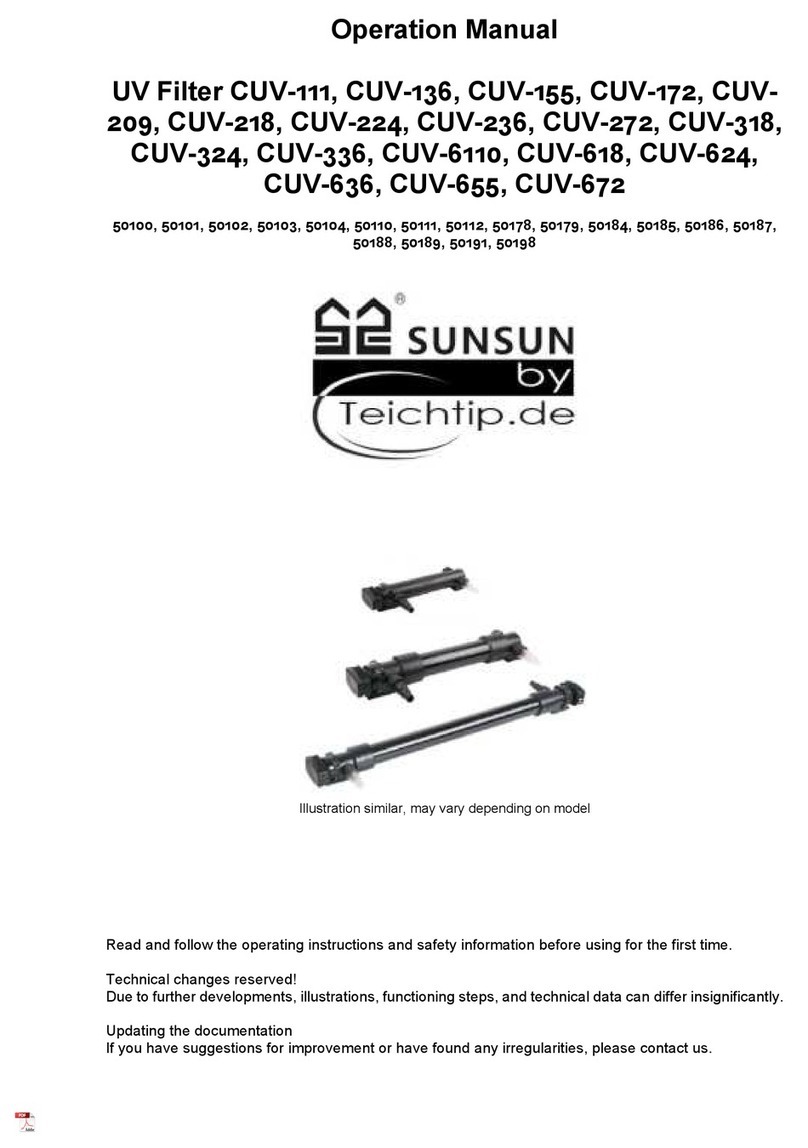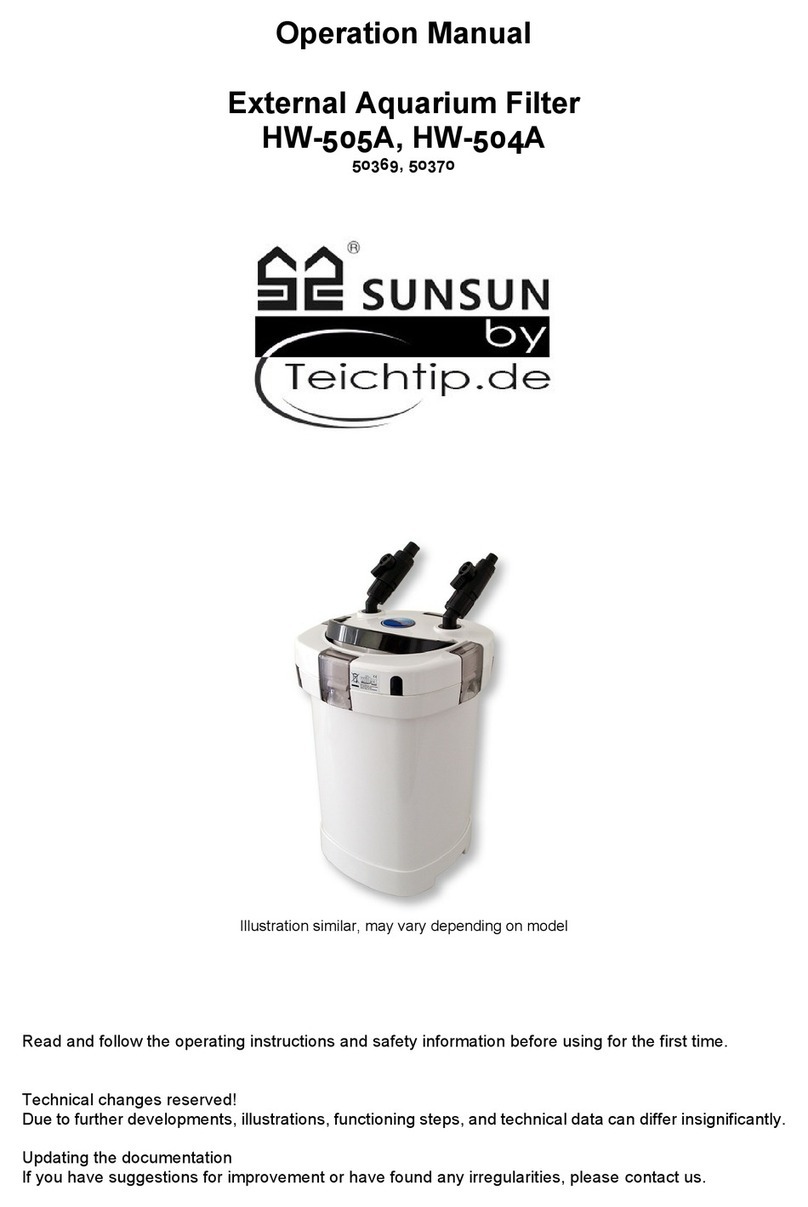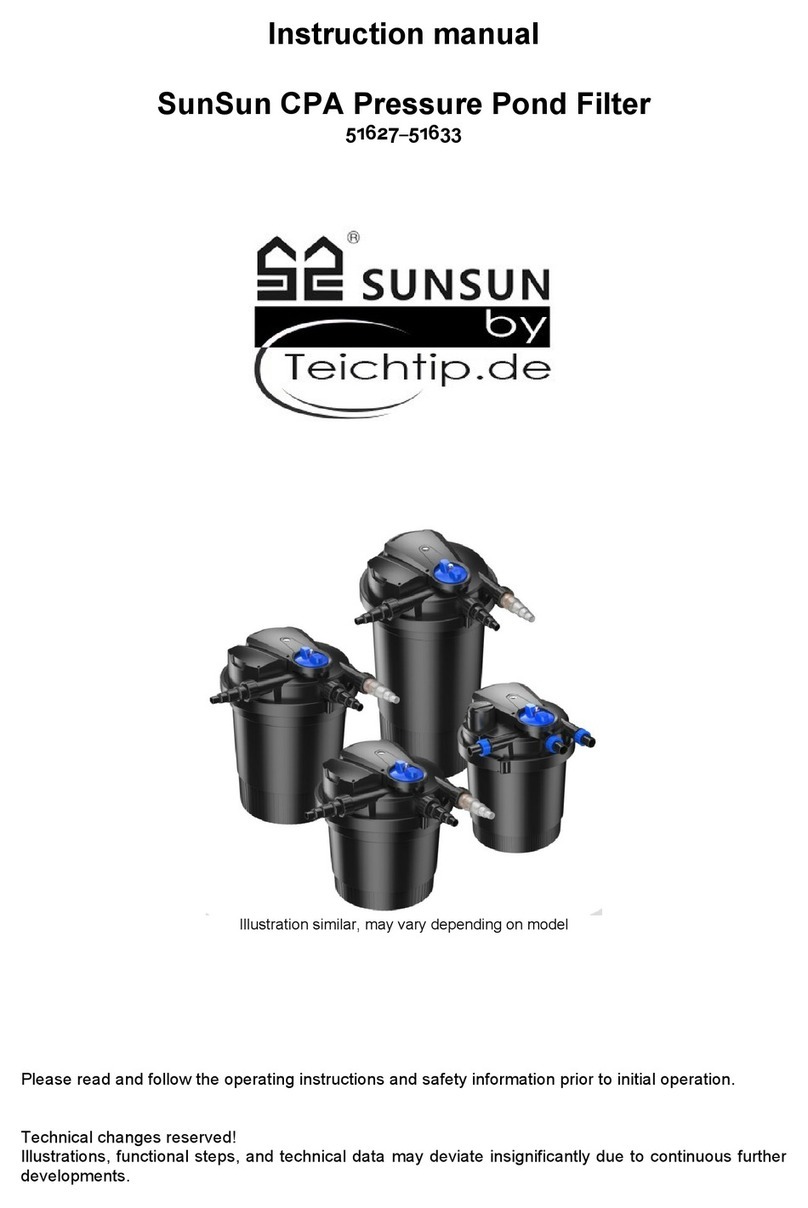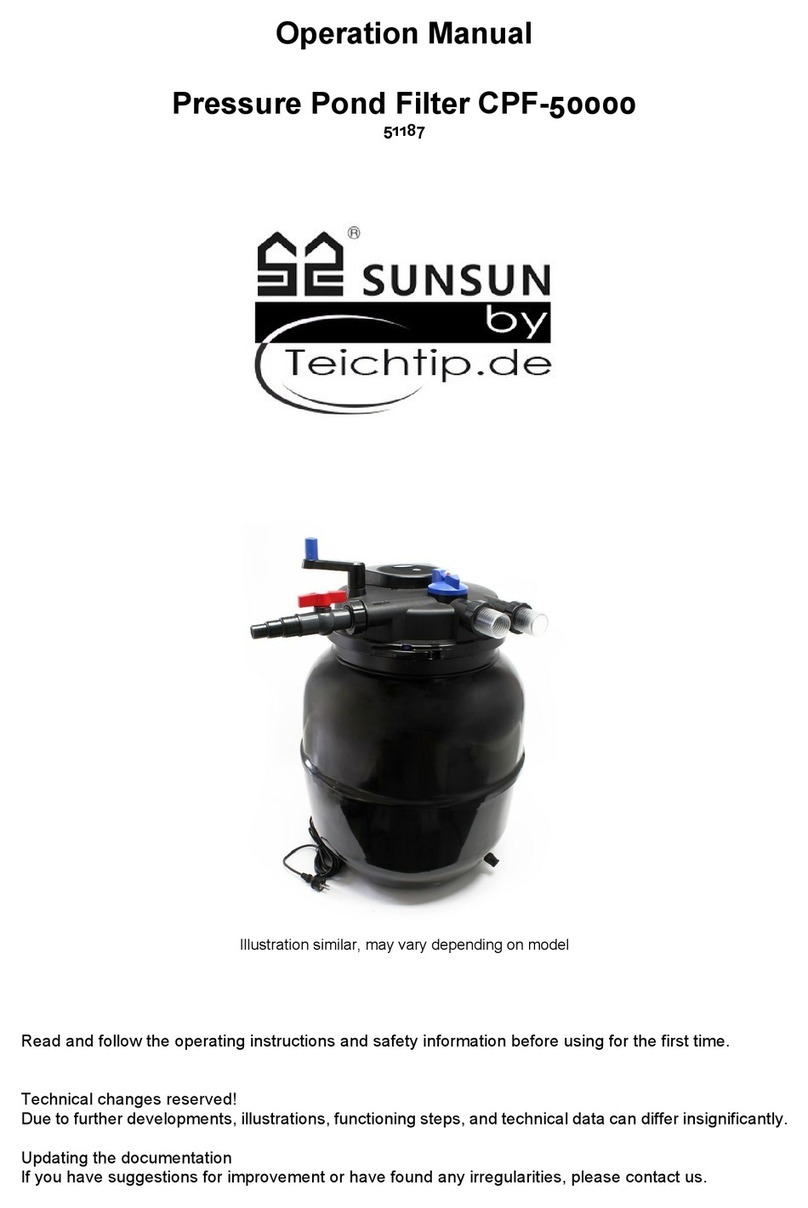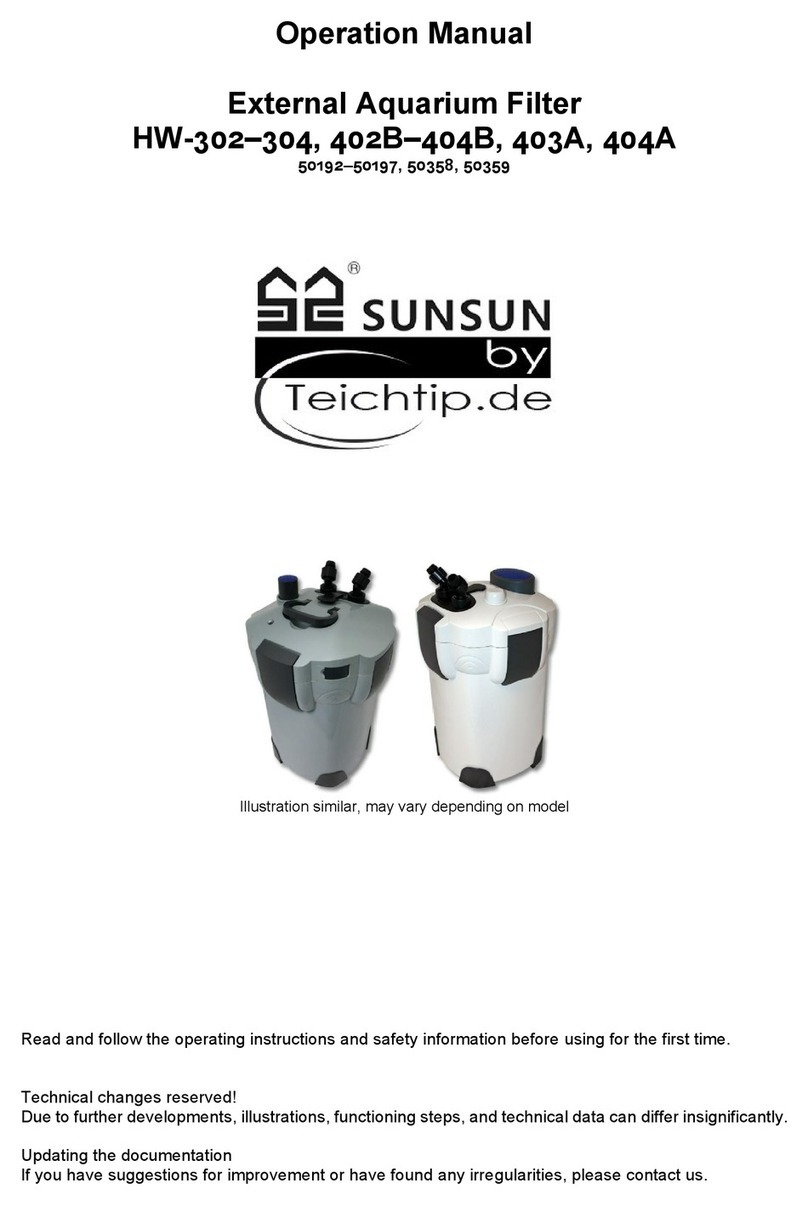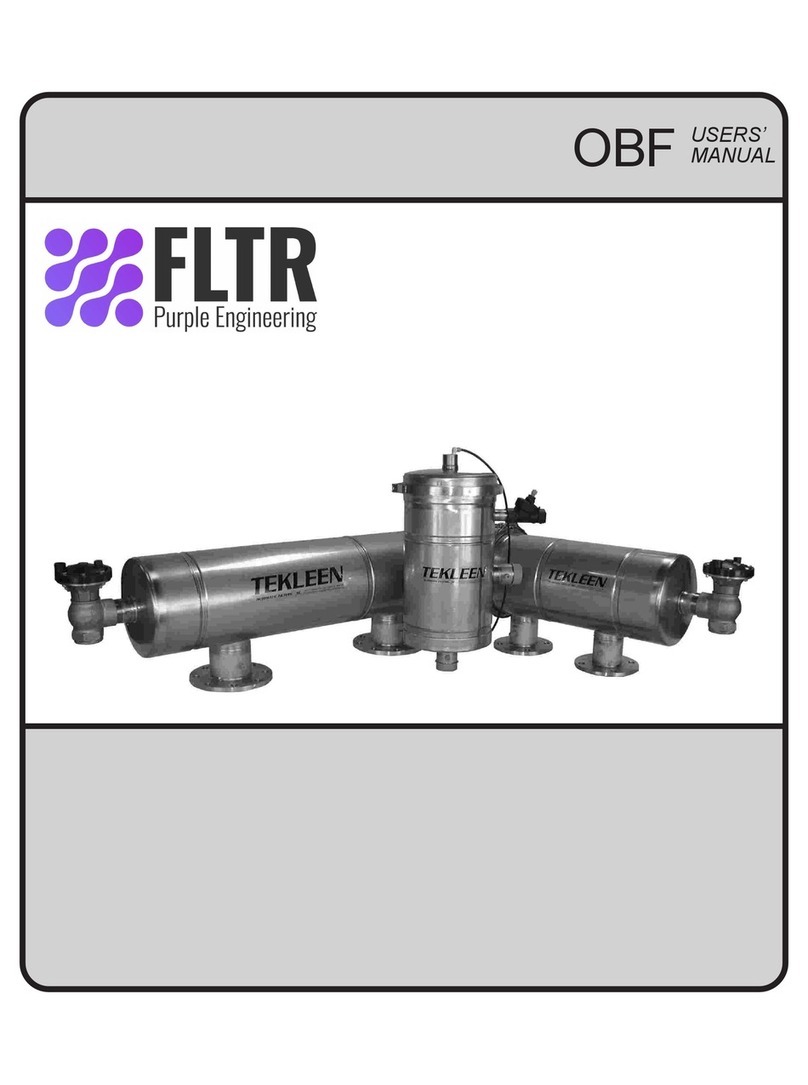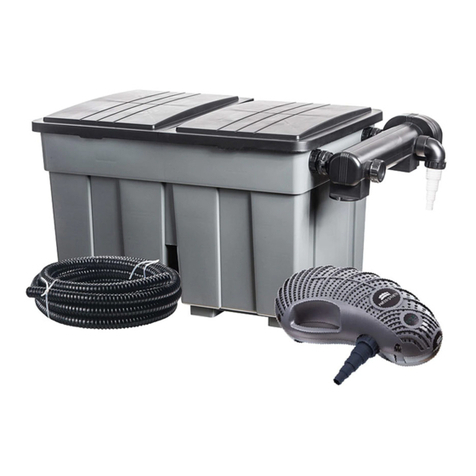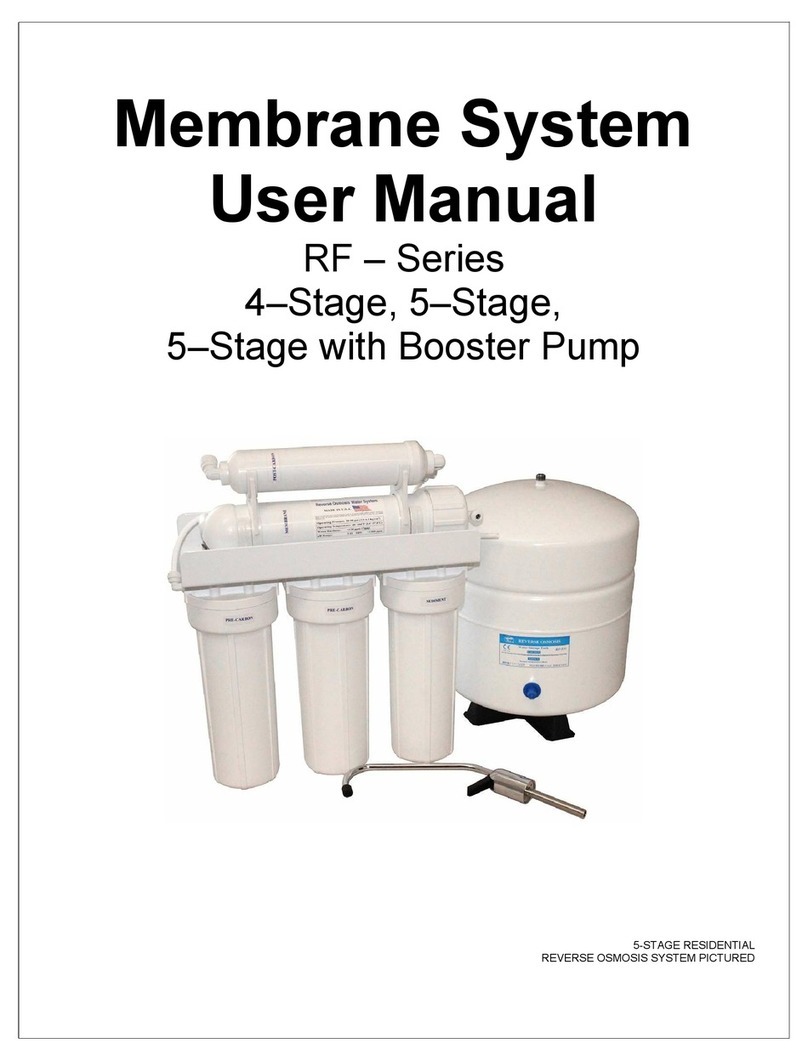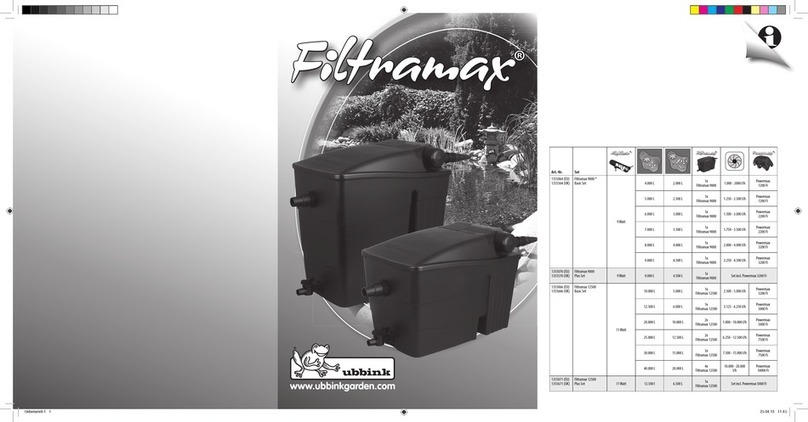© by WilTec Wildanger Technik GmbH Item 50167 Page 5
http://www.WilTec.de
http://www.aoyue.eu 09 2021-1
http://www.teichtip.de
Calculation example:
A specific example: Our pump manages 10,000 ℓ⁄h. This means that, with our test pond of 100,000 ℓ
volume, the pond is completely filtered every 10 h, which means that the water flows through our pond
filter 2,4 times in 24 h and is clarified. Because our filter takes 250 ℓ of water, and in one hour 10,000 ℓ
are pumped into the pond filter, the pond filter is fully filled with water 40 times per hour. This means
that every 1,5 min the filter is fully filled. Consequently, our bacteria have only 1,5 min to have an effect
on the water and produce clear, filtered water.
We recommend according to your needs to find a reasonable compromise
between both systems to achieve an optimal pond filtration.
Intended use
•Products of this series are optimal for the cleaning of garden and fish ponds. If it is correctly
applied, the pond water is effectively cleaned.
•Biodegradable filter materials clean the water from bacteria through mechanical filtering.
Equipment features (partly optional)
•Efficient cleaning through ultraviolet light sterilisation before filtering.
•Powerful bio-filtering by means of large filters, multi-chamber system, easy installation and
cleaning due to its modular structure
•Water flow system that conducts the first step of the filtration reduces the pressure on the filter
mats and the maintenance
•Optimal filter holder design enables easy cleaning
•Dirt indicator
•Temperature indicator
Commissioning
1. Remove the top cover (1), take out the bio-filter sponges (7) and wash them.
2. Wash the filter mat (8) as well.
3. Exactly replace the cleaned filter materials in their places.
4. Place the filter on a firm, level surface at least 2 m from the edge of the pond when using a UV
lamp with the filter connected. It is essential that the filter is horizontal to avoid overflowing.
5. Lay the drain hose for the water outlet to the pond and the hose for the dirt outlet to the sewer
or to a flower bed with sufficient slope.
6. Saw off the hose nozzle (20) at the appropriate point.
7. Put the hose onto the hose nozzle (20) and secure it with a hose clamp.
8. Put an O-ring (19) on the thread of the hose nozzle (20). Then push the thread of the hose
nozzle (20) through the water inlet opening. Put a second O-ring (19) on the thread from the
inside and then screw the outlet nozzles (18) onto the thread from the inside.
9. Now connect the other end of the hose to the pump.
10. For normal filter operation, leave the dirt outlet closed with the cap (17) and a seal (15). If you
want to attach a 2-inch hose permanently, remove the closing cap to mount the hose.
11. Fit the top cover.
12. Supply the pump with voltage. The filter will now start to work.
NOTE:
The bio-filter is a biological filter system, so from its initial installation it requires some weeks until its full
biological efficacy. Is reached.






